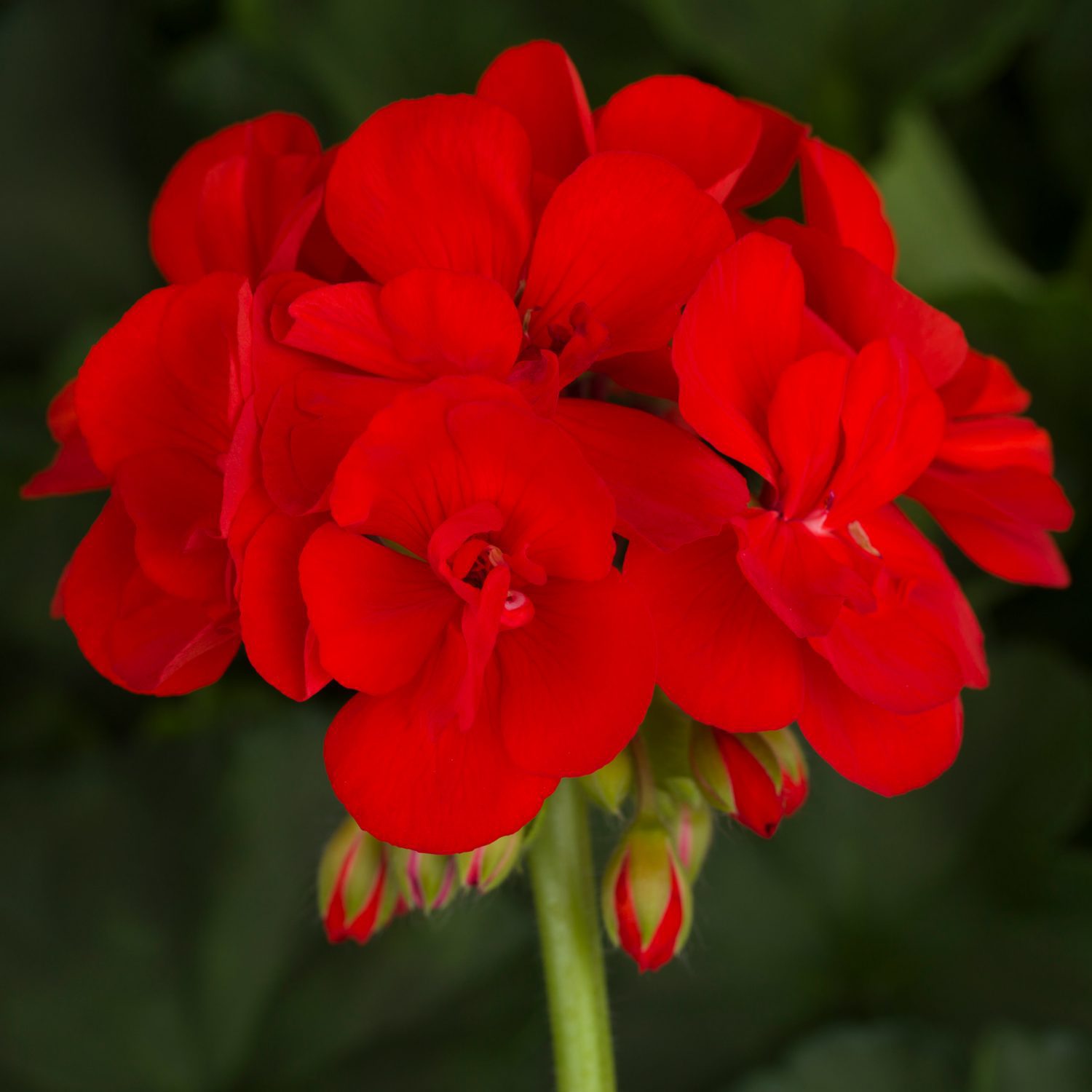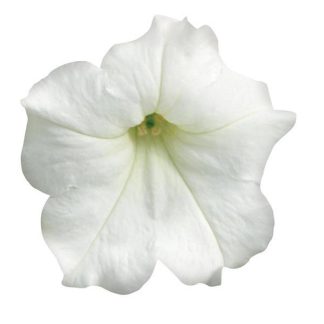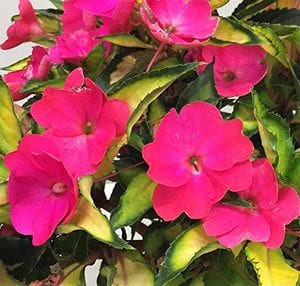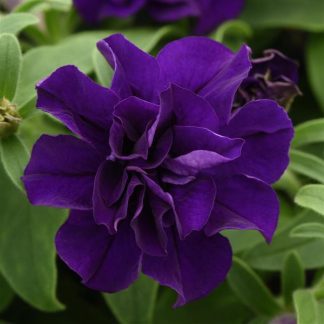Description
Americana Red Geranium: Welcoming Scarlet Joy into Your Space
We Begin with a Burst of Color
You step outside. A flash of scarlet greets you. That is the power of Americana Red Geranium—a Pelargonium bred to paint porches, patios, and flowerbeds with lively warmth. We love it because it asks for little yet gives so much. Vivid petals, sturdy stems, and a long blooming season come together in one carefree plant. In other words, it is garden happiness made simple.
Meet the Americana Red Geranium
Color That Commands Attention
The flowers glow a true, velvety red. Each rounded cluster rises above bright, mid-green leaves, creating a picture-perfect contrast. When sunlight touches those petals, they almost seem to sparkle. Nightfall dims them only slightly; the rich tone stays strong, even in the soft evening light. That bold color means you can spot Americana Red from across the yard. But most of all, it feels welcoming—like a friendly wave inviting guests to gather.
A Habit Built for Display
The plant grows about 12–16 inches tall and 12–14 inches wide. It forms a neat mound, keeping its shape without constant pruning. The stems stay sturdy, so blooms do not flop or twist. Instead of stretching lanky, the growth stays compact, which suits window boxes, hanging baskets, and mixed containers. Gardeners call this “zonale” style. We simply call it tidy.
A Proven Garden Performer
Americana Red belongs to a series celebrated for heat tolerance, steady flowering, and fast recovery after rain. Heavy summer storms may push blooms aside, yet the plant bounces back quickly. Even windy balconies see little breakage. After more than two decades on the market, this variety still tops sales charts—proof that many growers trust its consistent performance.
Where Does Americana Red Come From?
Pelargoniums trace their roots to South Africa. Early explorers carried seed and cuttings to Europe in the 17th century. Breeders then crossed species, aiming for bigger flower heads, vibrant colors, and sturdy forms. The Americana line emerged from those efforts in North America during the late 1990s. Each selection endured rigorous trials for disease resistance, flower power, and shelf life. Today, we enjoy the result: a cultivar that combines old-world charm with modern resilience.
Why We Choose This Variety Again and Again
- Season-long bloom from late spring until frost.
- Low maintenance care that fits busy schedules.
- Versatility in both sun and partial shade.
- Pollinator interest, especially hoverflies and the occasional butterfly.
- Cut-flower potential for small indoor arrangements.
Instead of settling for fleeting color, we gain a reliable, all-summer show.
How to Care for Americana Red Geranium
Light Rules
Full sun (six or more hours daily) gives the richest red. Yet part sun still works, especially in regions with intense afternoon heat. If leaves look pale or blooms thin out, move the container toward brighter exposure.
Soil Secrets
Loose, well-draining soil means happy roots. Use a high-quality potting mix for containers. In beds, amend heavy clay with compost and coarse sand. Aim for neutral to slightly acidic pH (6.0–7.0). A soggy base invites root rot, so choose raised spots or pots with drainage holes.
Watering Wisdom
Water deeply, then let the top inch of soil dry. Shallow sips create weak roots; drenching encourages strength. During peak summer heat, plants in small pots may need daily drinks. Larger planters stretch watering intervals to two or three days. Always direct water at the soil line—not the leaves—to deter fungus.
Feeding for Flowers
A balanced, water-soluble fertilizer (20-20-20 or similar) every two weeks supports nonstop buds. In baskets with constant watering, nutrients leach faster, so weekly feeding keeps color bright. Slow-release granules offer a lighter approach, but still add a mid-season boost for best bloom.
Temperature and Humidity
Ideal daytime temperatures range from 70-80 °F. Nights near 60 °F signal lush growth. Americana Red laughs at moderate humidity, yet good air flow remains key. Crowding several plants in a tight space may invite mildew. Keep at least a few inches between pots so leaves can breathe.
Pruning and Deadheading
Pinch out faded clusters by snapping the entire flower stalk at its base. This quick act tells the plant to produce fresh buds instead of seeds. If stems grow leggy, pinch tip growth to force branching. Short sentences help here: Pinch. Bloom. Repeat.
Overwintering Plan
In USDA Zones 10–11, Americana Red survives outdoors year-round. Elsewhere, treat it as an annual or overwinter indoors. You have two paths:
- Pot and carry—Dig up healthy plants before frost, trim by one-third, then place in a sunny window. Water sparingly.
- Bare-root storage—Shake soil from roots, tuck plants in paper bags, and hang in a cool (45–50 °F) basement. Sprinkle roots monthly so they never dry rock-hard. Replant in spring.
Pests and Problems
- Whiteflies hover under leaves; yellow sticky cards catch many.
- Aphids gather on tender tips; spray with a strong water jet or insecticidal soap.
- Botrytis blight shows as gray fuzz on petals during damp spells. Remove affected blooms and increase spacing.
- Edema (water blisters) appears if cool nights follow heavy watering. Cut back on moisture until weather evens out.
Good Neighbors in the Garden
Pair Americana Red with sweet potato vine, blue lobelia, or dusty miller for contrast. In other words, mix bold scarlet with trailing chartreuse, cool cobalt, or silvery frost. The red stands taller, the companions spill or mound, and the result feels balanced.
Propagation Made Easy
Take 4-inch tip cuttings in late summer. Strip lower leaves, dip ends in rooting hormone, and insert into moist, sterile mix. Keep bright but out of direct sun. Roots form in two to three weeks. After that, pot up young plants and pinch once to promote branching. By spring, you have free starts for gifts—or for filling bigger displays.
Design Ideas We Love
Containers and Hanging Baskets
- Doorway Drama – Combine Americana Red with chartreuse coleus and trailing bacopa in a tall urn.
- Patio Party – Fill a round basket with red geraniums, white petunias, and blue evolvulus for a patriotic theme.
- Balcony Color-Block – Plant only Americana Red in matte black pots. The bold color sings against the dark finish.
Beds and Borders
Line a walkway with alternating clumps of Americana Red and white alyssum. The path feels both formal and friendly. In mass plantings, place geraniums in groups of three to five for big color islands. After more than a year of experimenting, we find odd numbers look most natural.
Indoor Accents
Brighten a sunny kitchen sill with one compact plant in a ceramic pot. Rotate weekly for even light. You, the cook, gain fresh color while chopping herbs.
Common Questions, Simple Answers
Will my plant bloom all summer?
Yes, if you provide sun, fertilizer, and deadheading.
Why are leaves turning yellow?
Overwatering or lack of nutrients are usual suspects. Check soil moisture first, then feed if roots are not soggy.
Can I grow Americana Red from seed?
This cultivar is usually propagated by cuttings to keep traits true. Seeds may not match parent quality.
Do deer eat geraniums?
Deer generally avoid Pelargoniums because of their mildly pungent leaves. In high-pressure areas, though, nothing is completely safe.
Is it safe for pets?
Leaves can irritate cats and dogs if eaten in quantity. Keep pots out of playful reach.
Let the Scarlet Dance Begin
We have walked through color, care, and creative uses for Americana Red Geranium. Now the stage is yours. Find a sunny spot, plant with purpose, and watch the bold blooms dance from spring till frost. Together, we add a confident splash of red to every corner we tend. Happy growing!




